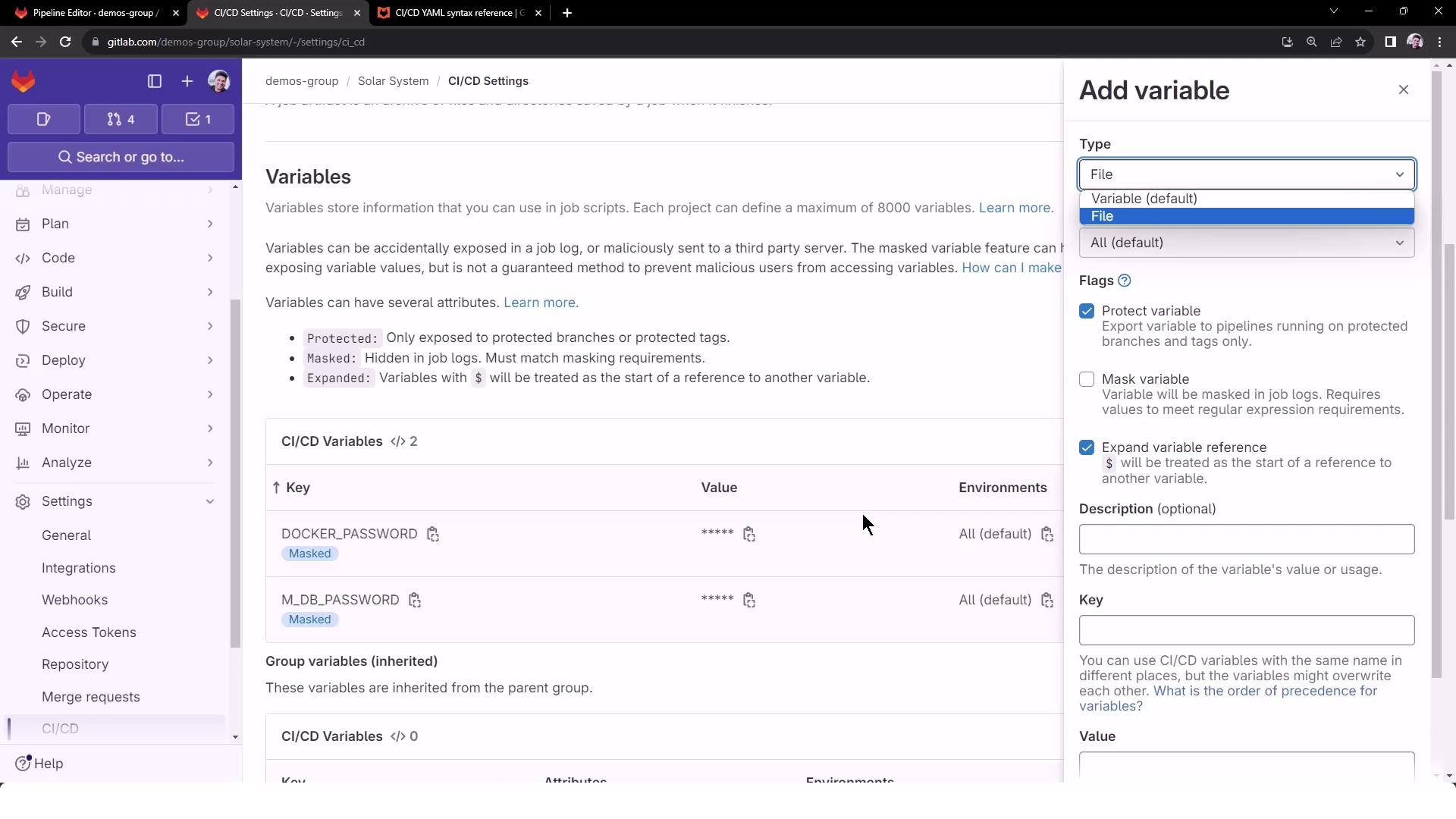GitLab CI/CD: Architecting, Deploying, and Optimizing Pipelines
Continuous Deployment with GitLab
Job Configuring Kubeconfig file
In this guide, you’ll learn how to inject your Kubernetes kubeconfig into a GitLab CI pipeline so that kubectl can authenticate and interact with your cluster. This setup is essential for automated deployments, health checks, and infrastructure management within your CI/CD workflows.
Why You Need to Provide a Kubeconfig
When kubectl runs without a valid kubeconfig, it can only display client information and will fail to contact the API server:
# .gitlab-ci.yml (without KUBECONFIG)
k8s_dev_deploy:
stage: dev-deploy
image: alpine:3.7
before_script:
- wget https://storage.googleapis.com/kubernetes-release/release/\
$(wget -q -O - https://storage.googleapis.com/kubernetes-release/stable.txt)/\
bin/linux/amd64/kubectl
- chmod +x kubectl && mv kubectl /usr/bin/kubectl
script:
- kubectl version -o yaml
Attempting to run the job yields:
$ kubectl version -o yaml
ClientVersion:
gitVersion: v1.29.1
...
ERROR: Job failed: exit code 1
Without server credentials in a kubeconfig, kubectl cannot reach your cluster’s API endpoint.
Local vs. CI: Kubernetes Authentication
On Your Local Machine
With a valid ~/.kube/config, you will see both client and server versions:
$ kubectl version -o yaml
clientVersion:
gitVersion: v1.29.1
serverVersion:
gitVersion: v1.29.1
Your trimmed kubeconfig might look like this:
apiVersion: v1
clusters:
- name: vke-cluster
cluster:
server: https://example-cluster:6443
certificate-authority-data: LS0tLS1CRUdJTiBDRVJUSUZJQ0FURS0t...
contexts:
- name: vke-cluster
context:
cluster: vke-cluster
user: admin
current-context: vke-cluster
kind: Config
users:
- name: admin
user:
client-certificate-data: <omitted>
client-key-data: <omitted>
Verify your context and nodes locally:
kubectl config get-contexts
kubectl get nodes
Storing Kubeconfig in GitLab CI/CD
To securely pass your kubeconfig into CI jobs, add it as a File-type variable in your project’s CI/CD Settings:
| Key | Type | Value | Environment Scope |
|---|---|---|---|
DEV_KUBE_CONFIG | File | Paste entire kubeconfig content | All (or specific) |

Warning
Treat your kubeconfig as sensitive data. File variables are stored encrypted, but avoid exposing them in job logs or unsecured scopes.
Updating the CI Job to Use Kubeconfig
Modify your .gitlab-ci.yml job to export the KUBECONFIG environment variable from the File variable before invoking any kubectl commands:
# .gitlab-ci.yml
k8s_dev_deploy:
stage: dev-deploy
image: alpine:3.7
before_script:
- wget https://storage.googleapis.com/kubernetes-release/release/\
$(wget -q -O - https://storage.googleapis.com/kubernetes-release/stable.txt)/\
bin/linux/amd64/kubectl
- chmod +x kubectl && mv kubectl /usr/bin/kubectl
script:
- export KUBECONFIG=$DEV_KUBE_CONFIG
- kubectl version -o yaml
- kubectl config get-contexts
- kubectl get nodes
Commit your changes and trigger the pipeline. The k8s_dev_deploy job should now complete successfully:

Verifying the CI Job Output
With the kubeconfig in place, your CI job will display both client and server details and list the cluster nodes:
$ kubectl version -o yaml
ClientVersion:
gitVersion: v1.29.1
ServerVersion:
gitVersion: v1.29.1
$ kubectl config get-contexts
CURRENT NAME CLUSTER AUTHINFO
* vke-cluster vke-cluster admin
$ kubectl get nodes
NAME STATUS ROLES AGE VERSION
gitlab-node-1 Ready <none> 5h v1.29.1
gitlab-node-2 Ready <none> 5h v1.29.1
Further Reading and References
Watch Video
Watch video content